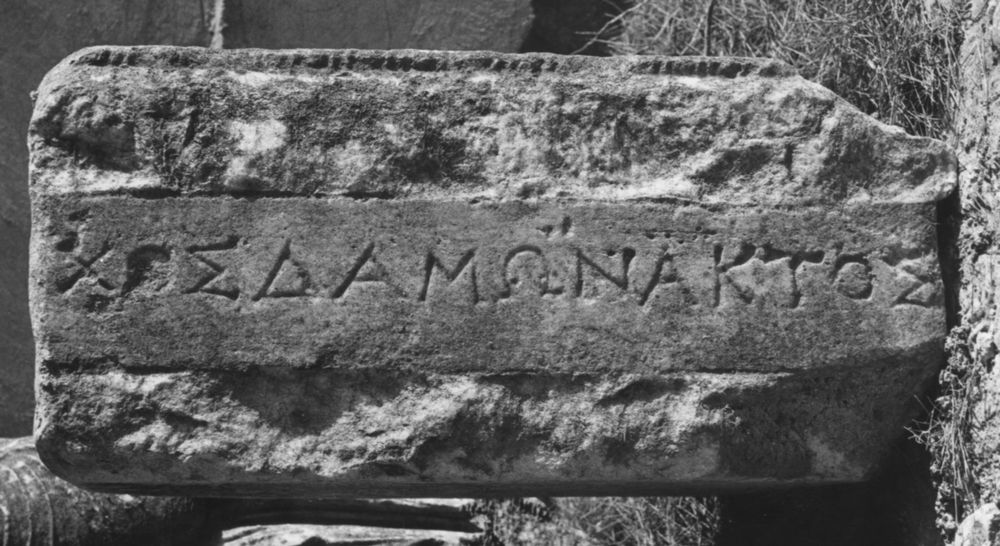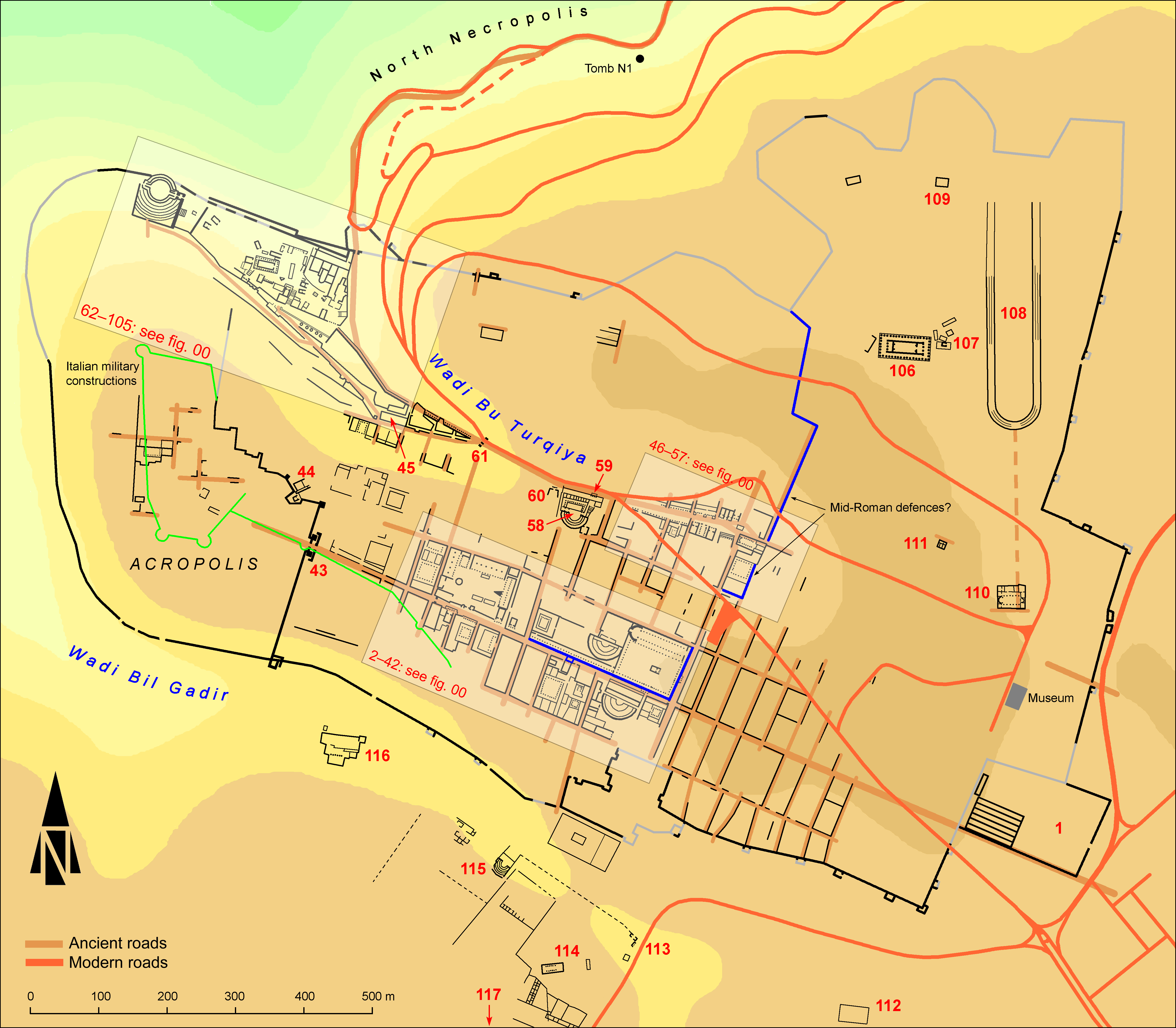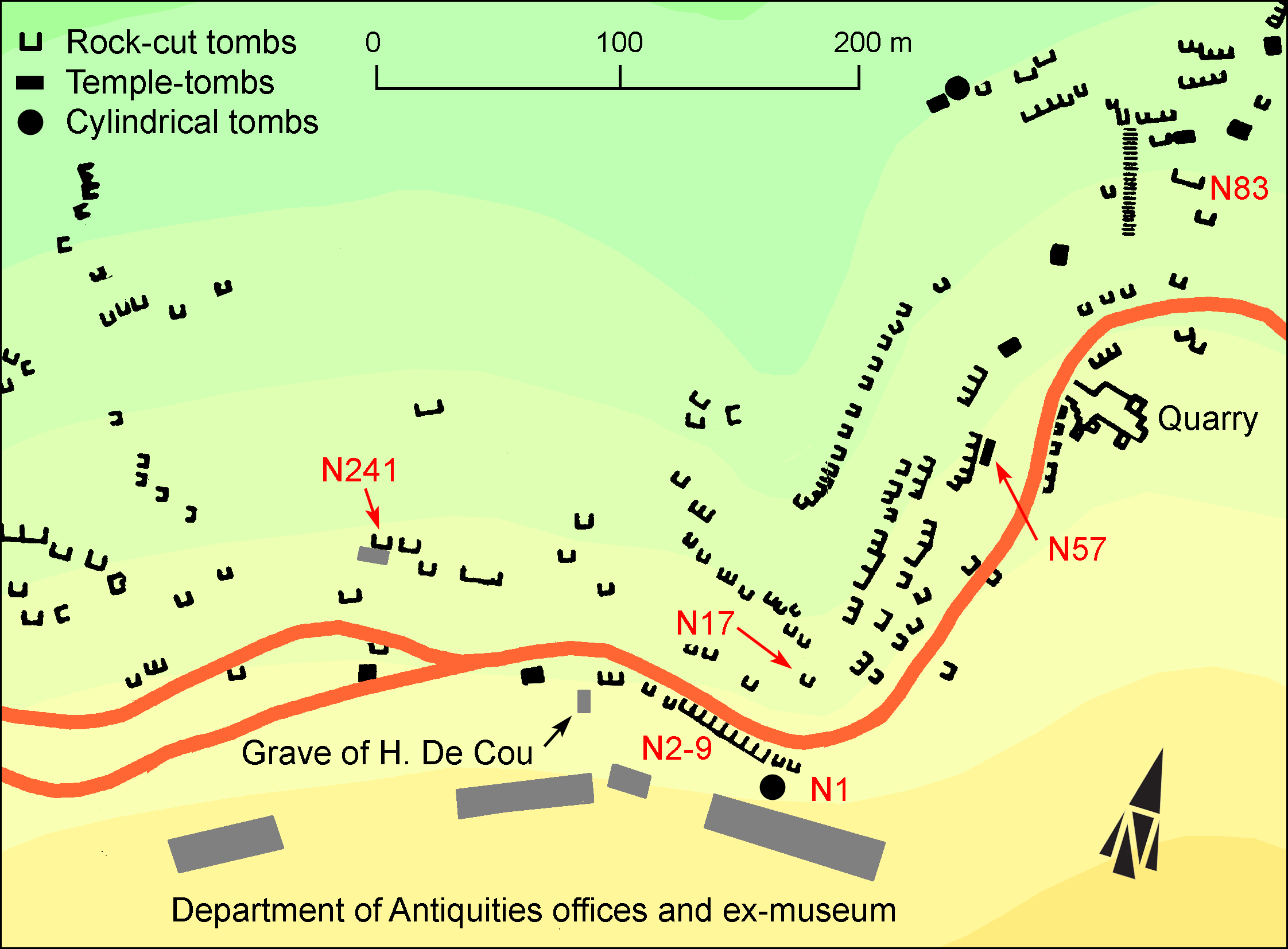EpiDoc XML:
IGCyr0275002
Trismegistos ID:
738281
Source description
Support: White marble fragmentary base with double mouldings of eggs and darts chipped out nearly everywhere; the original face, if once inscribed, is now illegible; the opposite face, bearing the inscription, has lost its left part, probably cut away (w: 0.59 × h: 0.28 × d: 0.46).
Layout: Inscribed between the mouldings (w: 0.59 × h: 0.11).
Letters: 0.032-0.04; deeply cut, without serifs.
Date: Ca. 300 BC (lettering).
Findspot: Found in 1915 at Cyrene ➚: North Necropolis, tomb of the Mnesarchoi (tomb N 171 Cassels).
Place of origin: Findspot.
Last recorded location: Cyrene Museum, inv. number unknown. Seen by C. Dobias-Lalou in 1979 in Shahat: still in front of the ancient Sculpture Museum and again on September 9th, 1997 in Shahat: Cyrene Museum.
Text constituted from: Transcription from stone (CDL).
Bibliography
Oliverio 1933-1936, p. 117, n. 119, fig. 75, whence SEG, 9.231; again as unpublished SECir, 64; IGCyr 027500 ➚. Cf. Beschi 1970, pp. 181, 182, 204; Marengo 1985, p. 150; Laronde 1987, pp. 56-58, whence SEG, 38.1892; Belzic 2022, catalogue B.10.
Text
Apparatus
1: [Μνάσαρ?]χος: [Μνάσαρ]χος Oliverio 1933-1936, Laronde 1987; [---]χος Beschi 1970
French translation
[Mnasar?]khos fils de Damonax.
English translation
[Mnasar?]chos son of Damonax.
Italian translation
[Mnasar?]chos figlio di Damonax.
Commentary
Pugliese Carratelli published again this inscription as SECir, 64, without illustration nor restoration, from Oliverio's papers, as was later established by Marengo.
Neither Oliverio nor Beschi did notice that the stone was re-used, a fact that seems rather certain to C. Dobias-Lalou.
Moreover, the lettering seems rather old amongst the series of bases from the same tomb (IGCyr0271002,IGCyr0272002, IGCyr0273002, IGCyr0274002 and possibly IGCyr1143002).
That family-tomb is commonly called after the name Mnasarchos, frequent among them, and the name of the present deceased has been thus restored as Mnasarchos. Furthermore, Laronde identifies the father Damonax with a monetary officer active between 331 and 321.
Only Beschi, who assumes the stone to have fallen from another tomb situated above, refrains from completing the name. The fact that it had been re-used is another reason for being cautious.
CC BY-NC-SA 4.0 Deed Attribution-NonCommercial-ShareAlike 4.0 International License.
All citation, reuse or distribution of this work must contain a link back to DOI: https://doi.org/10.60760/unibo/igcyrgvcyr2 and the filename (IGCyr000000 or GVCyr000), as well as the year of consultation.


